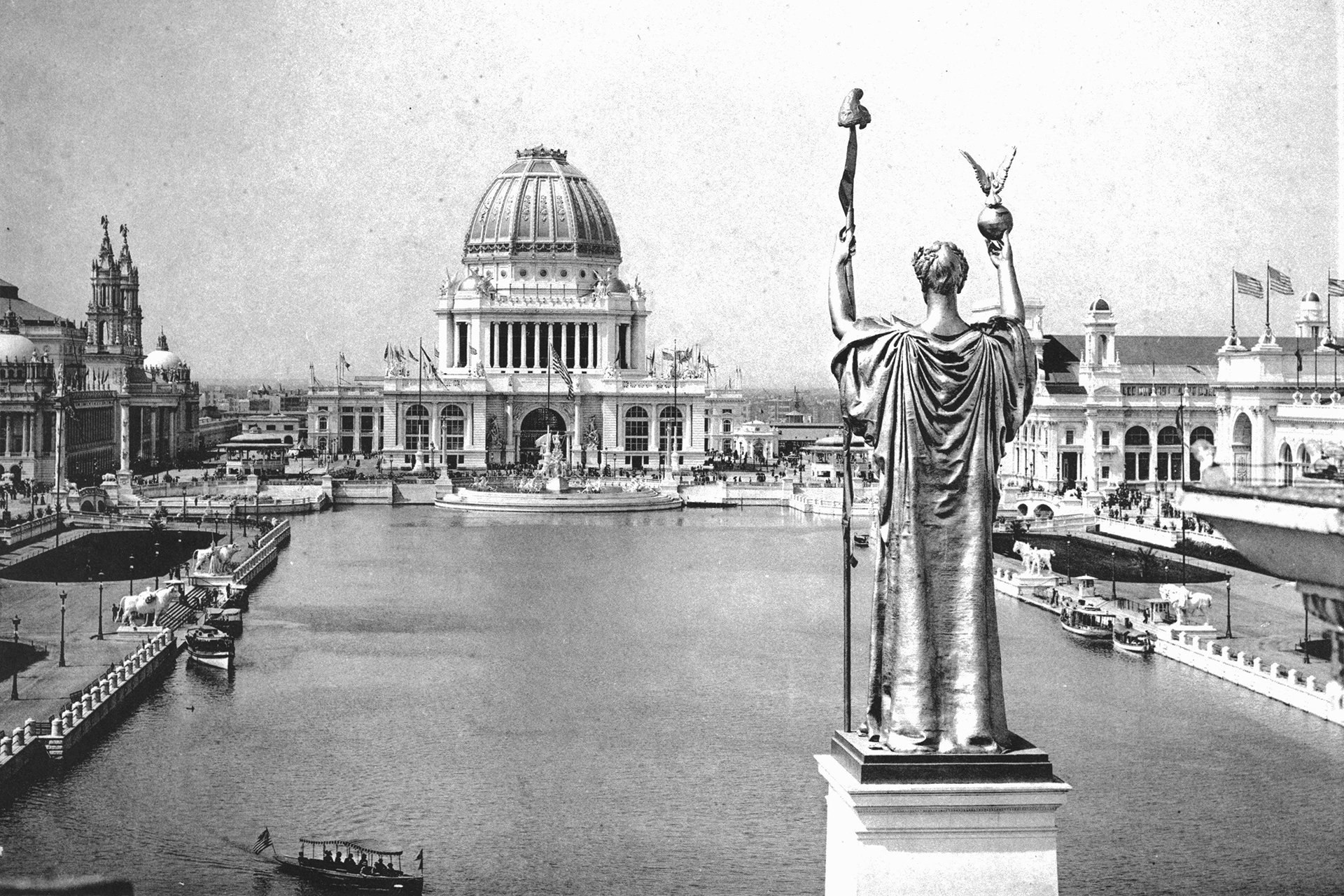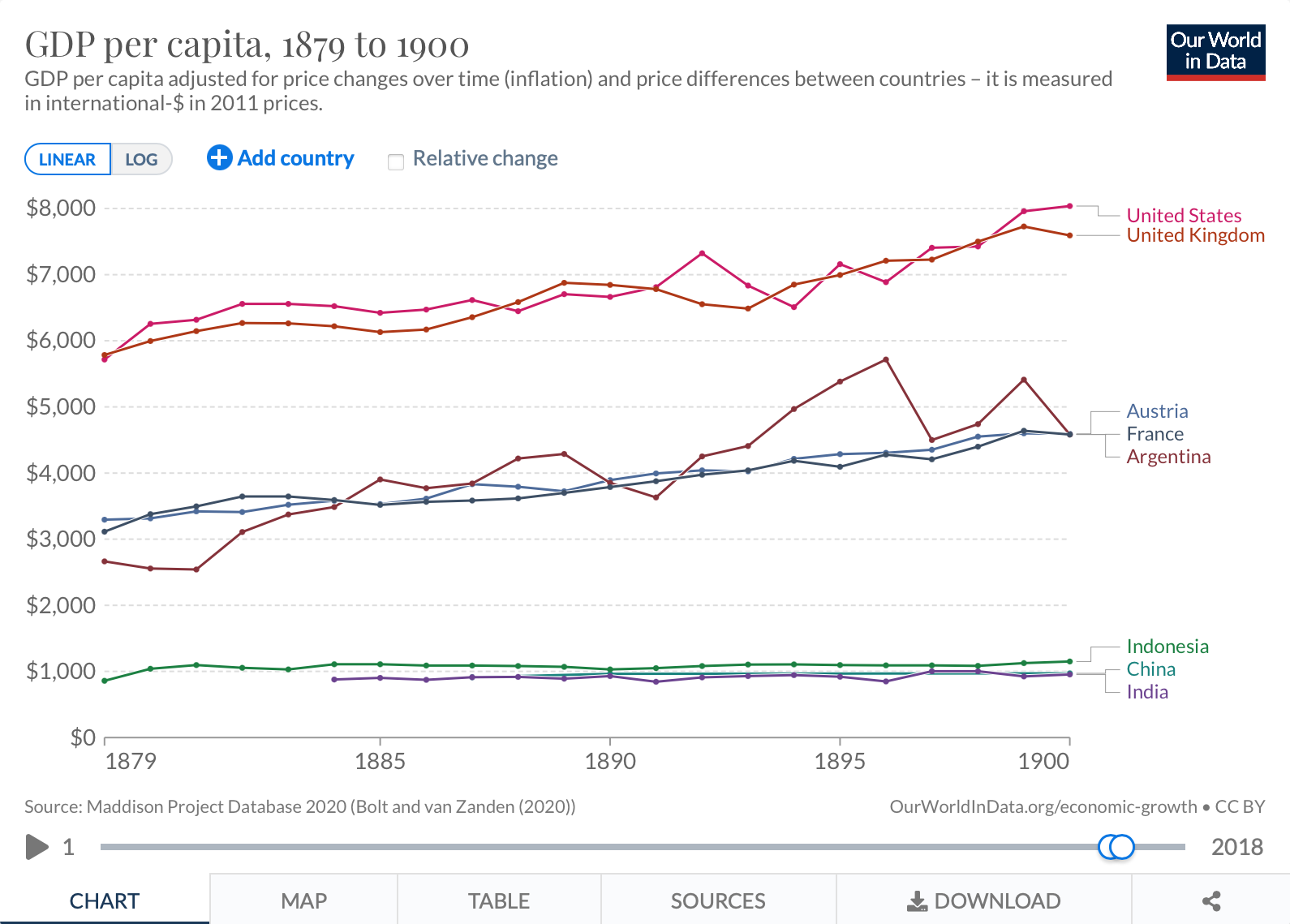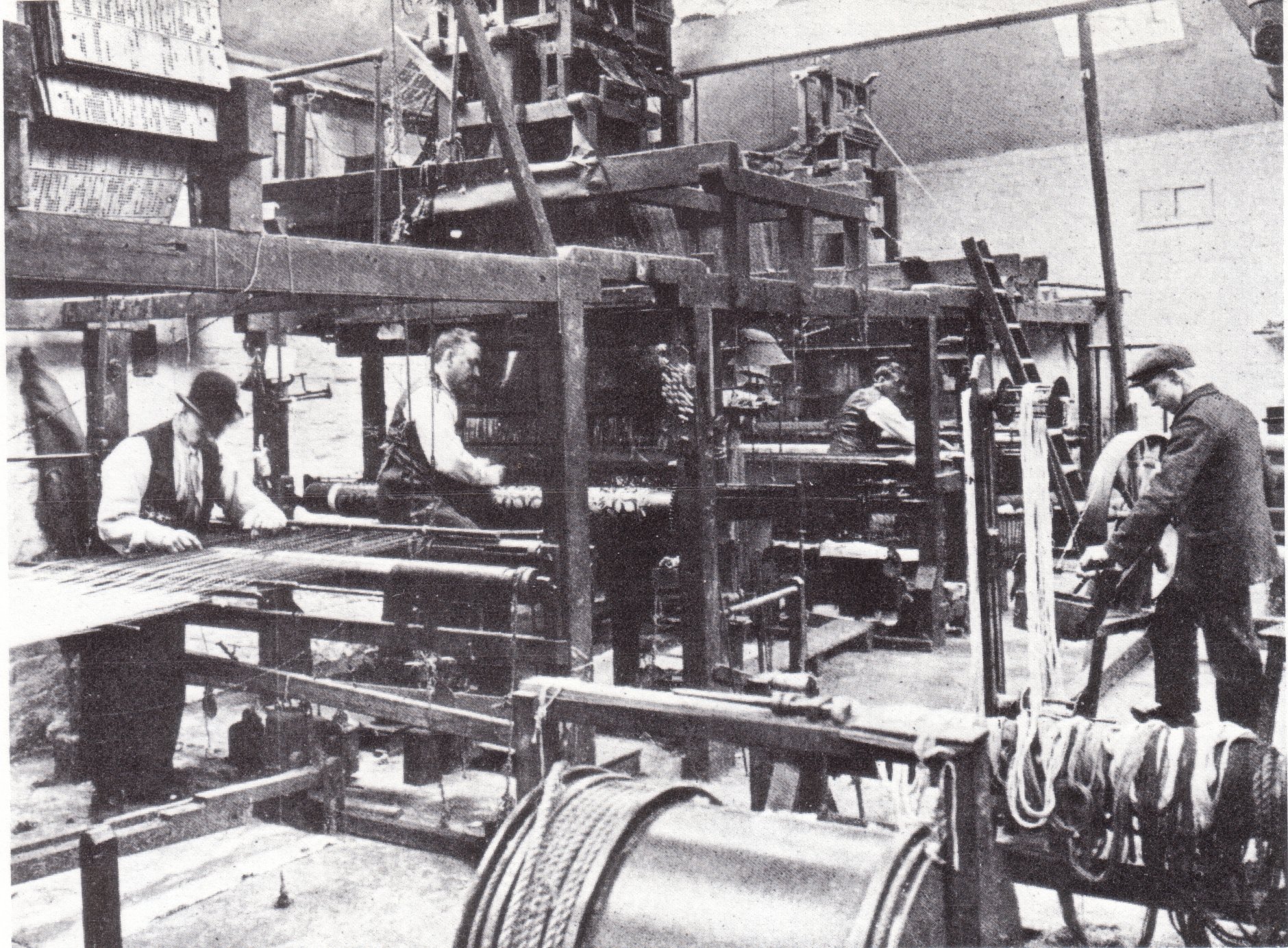
Industrialization — 1880–1900
The Arts & Crafts Movement and Design
Industrialization
The period of Industrialization reflected great changes with the United States becoming a global industrial power. Growth in the industrialized countries in Europe and the Americas began to outstrip that of many pre-industrialized nations. Urbanization was driven by the growth of factories and commerce. Technical advances also accelerated with the beginnings of electrification, the oil industry, and research labs. The US transcontinental railroad was completed in 1869 with the last spike driven into the rails in Iowa. It is considered the first internet, and it drove business growth, commerce, and business management practices. It also created a new management class with desires that exceeded the need for subsistence, while social inequities drove a reassessment of labor as well as social policy. A new language for industrial objects emerged out of these forces.
The Home Insurance Building (1885)
Assignments & Goals
Readings & Assignments
The readings for the week include the following:
ASSIGNED READING: Joy in Labour: The Politicization of Craft from the Arts and Crafts Movement to Etsy, Michele Krugh, Canadian Review of American Studies, Vol. 44, Summer 2014, pp. 281-301
OPTIONAL READING: Design and the Creation of Value, John Heskett, Chapter 4, Institutional Theory, pp. 88-103, Bloomsbury Academic (2017)
Assignments for the week are as follows:
HISTORICAL PRODUCT PORTFOLIO: Locate a relevant and impactful product from the period we are discussing (1880-1900). Discuss:
Why does the product exist and what needs were met?
Why is the product important?
Who did the product empower/disempower?
What behaviors did the product change or create?
METHODS TOOLKIT: Conduct an Era Analysis
Identify something that has existed for some time
Frame how the product, technology, experience, etc. has changed over time
Describe the themes of change
Visualize the eras
Goals for this Class
Students will be able to articulate the differences between craft and design at a high level. They will understand major trends of the period including: “the second industrial revolution,” rail transportation, the labor movement, and urbanization. Students will understand the drivers for design education and the design of products in the marketplace. The product portfolio will be started.
Systematic Innovation
“Before I got through, I tested no fewer than 6,000 vegetable growths, and ransacked the world for the most suitable filament material.”
Thomas Edison
Globally, the wealthiest countries were those which industrialized prior to this period. The United States rapidly rose to challenge the United Kingdom with its focus on industrialization and education supporting mining, engineering, and manufacturing. For perspective, global GDP growth is presented below. (sources: Our World in Data)
The Gilded Age
This period reflects the rapid growth around the world, as well as the inequities and social challenges that were created. It was called The Gilded Age satirizing of the thin mask of gold masking these challenges. A growing middle class was supported by higher wages in both blue-collar and a new managerial class — white-collar. Education in technical and agriculture supported growth in productivity and wages. This led to the Unites Staes leading in technical advances and patents. “From 1860 to 1890, 500,000 patents were issued for new inventions—over ten times the number granted in the previous seventy years.” Of the numerous technical advances, the skyscraper, efficient lightbulb, and the automobile stand out for their future impact to society. Even with rising wages, inequities accelerated, and the labor movement hoped for workers to receive their share of the new wealth created by society. Urbanization accelerated during this period. Along with this came many social challenges. Our goal is to understand the impacts of these factors on design both during this period as well as into the future.
A Baltimore & Ohio engine. (image: Railroad circa 1910)
Chicago, Burlington & Quincy R.R. and intersecting lines, 1883 (Library of Congress)
Railroads and Productivity
In 1880, there were 160,000 miles of railroad in the United States. The railroads drove many technical and managerial innovations. Standardization on rail gauge size, allowed for efficient switching across networks. Time was a challenge for a country that stretched 2,800 miles from The Atlantic to the Pacific. Charles Ferdinand Dowd proposed a national time for railroads in 1870. The proposal was accepted by the railroads in 1883. With networks of capital equipment and real estate, Railroads required strong management and a stable financial system to support the expenditures to expand services. Frederick Winslow Taylor began to study productivity and industrial capacity during this period, leading to the emergence is Scientific Management in the 20th Century.
Image: Standard Railroad Time Map (American Rails)
Technical Advances
The United States passed the Morrill Land-Grant Acts which supported public education in the technical and agricultural sciences. Industrial advances in manufacturing, mining, and business can be attributed to the growing educated middle class. Considering the systemic nature of innovation is necessary in particular when we discuss the incandescent light bulb. Thomas P. Hughes, in Technology at the Turning Point, describes:
“The lamp was a small component in his system of electric lighting, and no more critical to its effective functioning than the Edison Jumbo generator, the Edison main and feeder, and the parallel-distribution system. Other inventors with generators and incandescent lamps, and with comparable ingenuity and excellence, have long been forgotten because their creators did not preside over their introduction in a system of lighting.”
Other innovations including the skyscraper, elevators, the automobile, and the telephone required a complete ecosystem in order to be useful and effective. These innovations required new ways of working.
Edison Bulb, 1800 (Franklin Institute)
Image: History Computer
Thoughts to Consider
Consider the influence of technology on design.
Schwinn Bicycle, 1885 (Doug Barnes)
Societal Impact
“[E]ven when the technology is predicted properly, it is rare that anyone truly un- derstands its real impact, how it will be used…”
Don Norman
The Arts & Crafts Movement
The Arts and Crafts Movement was a reaction against the excessive ornament of objects, as well as the decline in quality of products produced in factories. Owen Jones, an influential architect and designer, stated that “ornament ‘must be secondary to the thing decorated.’” As a social movement, it was concerned with both the welfare of the individual as well as the engagement of the person who created objects, whether manufactured or crafted. The domain of art included everything from the home to the utensils that a household may use. According to Morris and other design theorists, the artist and the craftsman would ideally work together. The labor issues of the time deeply affected the movement, and the struggle to rectify the limited scope of craft with the enormous economic engine that produced much of societies needs was in vain. The conversation was however critical and continues to today.
William Morris & Co Wallpaper, 1917 (Brooklyn Museum)
Modern Style
Modern Style was an Art Nouveau style which evolved out of The Arts & Crafts Movement in the United Kingdom. It maintained a strong belief that objects should be beautiful and that craftsmanship was critical. Modernist beliefs focused on the future, and integration with technology was important. With the growth of demand for mass-produced objects, designers needed to consider the boundaries of craft and industry. We see glimmers of the future in many of the designs.
Scotland Street School, Charles Rennie Mackintosh
The Skyscraper
Influenced by the rapid growth of urban areas in the nineteenth century, builders planned, and re-planned construction projects in light of nearby developments. The skyscraper was envisioned as a means to utilize expensive real estate in the urban centers of New York City and Chicago. The Home Insurance Building in Chicago represents the pressures well. It was planned as a smaller structure and over time outgrew it’s intended foundation. A new fireproofed iron structure was devised in order to allow for the increased height while at the same time allowing for greater window area. Constructed in 1885, two additional floors were added in 1891. Elevators were rapidly refined to support the vertical transport of people and supplies.
Image: The Flatiron Building, New York City, 1903 (Wikipedia)
American Design Education
The focus on educating the population in general, is demonstrated by the beginnings of design education in the United States in the late nineteenth-century. “Exactly fifty years before the Bauhaus, in 1869, The McMicken School of Design in Cincinnati was the first university-based design school to open its doors in the United States. Other eminent American design schools such as the School of the Art Institute of Chicago (established in Chicago as the Chicago Academy of Design in 1866), Rhode Island School of Design (established in Providence in 1877), Columbus College of Art and Design (established as the Columbus Art School in Columbus in 1879), Parsons School of Design (established as the Chase School in New York City in 1896), Academy of Art University (established as the Academy of Advertising Art in San Francisco in 1929), ArtCenter (established as The Art Center School in Pasadena in 1930) were established as private, standalone schools.” Partnerships with industry were a distinct feature of some programs.
RISD graduating class of 1902 (RISD)
Source: The Making of an American Design School: Lessons Learned, Gjoko Muratovski, She-Ji (2020)
Thoughts to Consider
Consider the boundary between craft and manufacturing.
The weaving shed at Morris & Co (1880s)














